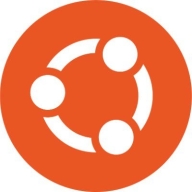


Find out what your peers are saying about Red Hat, Canonical, Oracle and others in Operating Systems (OS) for Business.
We have saved approximately 50% of our revenue by using CentOS.
It saved a lot of time through troubleshooting, which gives us substantial room for improvement in terms of fixing things.
A long lifecycle is key to having a good return on investment.
Being able to transform common manual tasks that previously took all day into processes that take an hour, half an hour, or even less, demonstrates clear value.
Red Hat Enterprise Linux has saved us time and increased productivity.
I would rate the customer support for CentOS a 10 on a scale of 1 to 10.
I've seen many people across the globe interacting, and when users encounter issues, the community provides solutions.
I would rate the documentation about eight in terms of usefulness.
Red Hat Enterprise Linux (RHEL) support is great, as they go beyond their duty to help resolve issues and provide solutions even for third-party software such as XRDP.
When we do contact customer service, they are generally very knowledgeable and well-versed in our size.
Usually, I send the information, and they have something for me within hours, sometimes even minutes.
They responded well, understood that the issue was not on my end, and provided a patch within two days.
The community around Ubuntu Linux is beneficial, providing answers to questions and assisting with issues.
Ubuntu Linux has a comprehensive knowledge base for self-help.
CentOS is scalable and user-friendly without requiring complex configurations.
It allows users to scale resources vertically for upgrading hardware and horizontally by adding more servers, making it suitable for modern web hosting and containerized applications.
CentOS's scalability for my organization has handled growth and changing needs smoothly.
Many of our applications scale really well, with some having several hundreds of VMs, which we couldn't accomplish on Windows.
Red Hat Enterprise Linux (RHEL) scales very well with the growing needs of our company.
Red Hat Enterprise Linux (RHEL) handles increases in users, applications, or data smoothly, which is why we use it for all our projects, as it provides us with confidence.
In a server environment, it can seamlessly adapt to increased customer demand.
Any Linux is scalable in terms of capacity, and on a day-to-day basis, we use scalability options with the help of Kubernetes clusters.
So far, I do not have any issues related to security in Ubuntu Linux.
CentOS is stable, reliable, flexible, and very useful.
CentOS's simplicity and stability make it easy to use.
I believe CentOS is stable, but we are gradually moving away from it.
It works consistently with minimal downtime and very few bugs or glitches.
It just works, and that's really the key factor; I can't remember the last time we had a system go down and had to restore it due to a bad patch.
We've not had a service outage with Red Hat in six years.
The system has been completely stable, which makes it deserve a perfect score.
Ubuntu Linux is extremely stable and maintains uptime effectively.
Ubuntu Linux is generally stable, though there can be occasional issues with new hardware integration.
The documentation and support could be improved, along with compatibility with newer hardware as hardware continually evolves over time.
Kernel parameters, sysctl config details, tuned profiles, process prioritization, optimized disk, and input scheduler choice are all points for performance optimization.
CentOS removed long-term support, and version releases every two to three years are not ideal for production environments because they necessitate frequent updates.
Addressing these limitations would significantly enhance the operating system's flexibility and efficiency.
The built-in security features of Red Hat Enterprise Linux were insufficient for our needs, necessitating the implementation of supplementary security measures.
By providing pre-installed, native automation tools within the operating system, Red Hat would streamline processes and improve user efficiency.
There is a push towards integrating AI into software for various purposes like video and sound processing.
Stability issues occur when integrating new components due to physical or technical challenges.
Unlike CentOS, Ubuntu Linux lacks an easily accessible inbuilt repository where dependencies or packages are easily found.
There was no cost in terms of deploying it or getting the license for it.
CentOS is a free product with free updates.
The enterprise subscription cost is at a certain level, but CentOS saves customers from paying additional money, optimizing costs for enterprises and startups involved in application development.
It may be considered expensive compared to other solutions like CentOS or Ubuntu, which offer some of the same features without additional costs.
Its pricing has room for improvement because it's more expensive in the local market due to purchasing power parity in India.
Windows Servers base their cost on the number of users and have high licensing fees, while Red Hat Enterprise Linux offers free versions alongside its paid, supported versions.
For an enterprise-wide scalable operating system with professional services, you can select Ubuntu Linux at a reasonable price.
The setup cost is free.
Ubuntu Linux is open-source, leading to cost savings through its free availability.
The update cycle changed when CentOS was prioritized for updates, causing stability issues.
In my experience, the best feature that CentOS offers is the network configuration of a device from the command-line interface, which is exceptionally clean.
The best feature CentOS offers is that it's free.
It also has strong security features, is OIS and FIPS certified, and has built-in Linux security configurations.
There is also no downtime.
The operating system allows for the simple addition of kernels, modules, and other applications, making it highly adaptable to various needs.
Ubuntu Linux's open-source nature supports community contributions, bolstering its development and support ecosystem.
Ubuntu Linux supports remote troubleshooting via SSH, allowing connection from anywhere, which is beneficial for troubleshooting server issues.
In terms of security, I am satisfied with Ubuntu Linux and I can rely on its security features more than I can with Windows.
| Product | Market Share (%) |
|---|---|
| Red Hat Enterprise Linux (RHEL) | 8.6% |
| Ubuntu Linux | 11.5% |
| CentOS | 4.5% |
| Other | 75.4% |



| Company Size | Count |
|---|---|
| Small Business | 30 |
| Midsize Enterprise | 20 |
| Large Enterprise | 26 |
| Company Size | Count |
|---|---|
| Small Business | 83 |
| Midsize Enterprise | 47 |
| Large Enterprise | 249 |
| Company Size | Count |
|---|---|
| Small Business | 84 |
| Midsize Enterprise | 21 |
| Large Enterprise | 52 |
CentOS offers a stable, secure, and compatible environment with Red Hat packages, providing robust performance and cost efficiency. Its lightweight, scalable design and strong community support make it ideal for handling heavy workloads with limited resources.
CentOS is a popular choice for organizations seeking reliable server and virtualization solutions. Known for its robust stability and security, it offers seamless integration and maintenance. However, after a shift from Red Hat, some challenges emerged, including weak NFS client performance and a more complex interface, which beginners find challenging alongside insufficient documentation. Despite these, CentOS remains a favored option for deploying web applications, server installations, and supporting cloud solutions, thanks to its efficient use in monitoring, databases, and telecommunications.
What are CentOS's key features?CentOS is widely used in industries requiring robust infrastructure, such as web hosting, scientific computing, and telecommunications. In data centers, companies deploy it to support virtual environments, testing, and development. The OS powers business applications, email servers, and cloud solutions, offering a cost-effective alternative to Red Hat.
Red Hat Enterprise Linux offers stability, security, and support for mission-critical applications with robust tools and scalable architecture, ideal for diverse environments and hybrid cloud compatibility.
Red Hat Enterprise Linux provides organizations with a reliable platform ideal for high-performance computing and virtualization. Known for its robust security and seamless network administration, it integrates well with OpenShift and Ansible, ensuring adaptability and scalability. Despite challenges with documentation, upgrade complexity, and cost, RHEL remains a formidable choice thanks to its comprehensive documentation and extensive community support.
What are the key features of Red Hat Enterprise Linux?
What benefits should users look for when evaluating Red Hat Enterprise Linux?
Organizations across industries like financial services, telecommunications, and application hosting implement Red Hat Enterprise Linux for server and application management. Its compatibility with technologies such as SAP, Oracle, and Ansible supports functions including web, database, and enterprise solutions, ensuring stable and secure performance in high-pressure environments.
Ubuntu Linux is an open-source platform known for its robust security, ease of use, and rapid performance. Its lightweight design and comprehensive support system make it ideal for diverse IT environments, providing seamless management and scalability options.
Ubuntu Linux stands out with its open-source nature that allows extensive customization and access to a broad range of free software. It is widely praised for its stability and a vast package repository offering regular updates, enhancing its usefulness across different sectors. The platform is equipped with a lightweight design and excellent community support, making it scalable and easy to manage. While it could improve in areas like Windows software compatibility and user interface refinement, its benefits in enterprise management and development projects are undeniable. Improved documentation, better hardware integration, and enhanced third-party application compatibility are additional focal points to consider.
What are the key features of Ubuntu Linux?
What benefits should be considered from reviews?
Ubuntu Linux is prominently implemented in industries for tasks such as server management, application deployment, and software development. Its resource efficiency and open-source tool compatibility make it a favorite for programming, research, and cybersecurity. Companies frequently use it for web hosting, cloud services, and managing multi-user enterprise solutions.